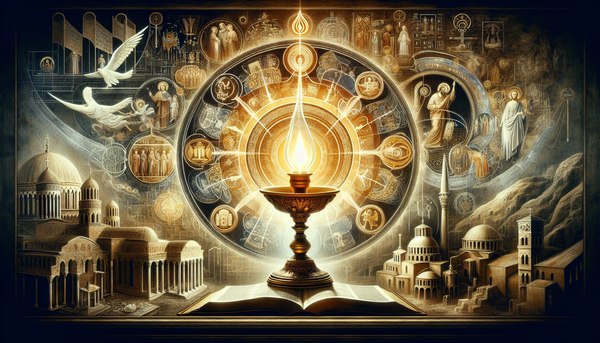Exploring the Bible's profound messages and symbols provides a rich tapestry of guidance for believers seeking to live out their faith. From the lampstands illuminating the presence of God to the wisdom imparted to the early churches, scripture offers a wealth of insight for those who delve into its depths. This article seeks to shed light on the significance of lampstands in the Bible, the commendation of the church in Ephesus, the essence of true religion through Jesus Christ, and how these teachings can inform our understanding of contemporary issues such as finding motivation in faith and reconciling military service with biblical commandments. Join us as we journey through these themes, drawing from the well of scripture to nourish our spiritual understanding.
Table of Contents
The Significance of Lampstands in the Bible
In the Bible, the lampstand is a powerful symbol of light and illumination, representing the presence of God and the light of His truth. The book of Revelation speaks of seven lampstands, each symbolizing one of the seven churches, demonstrating their role as light bearers in a world clouded by darkness (Revelation 1:20). The Old Testament provides detailed instructions for creating the lampstand, or menorah, in the Tabernacle, crafted from pure gold with seven branches holding lamps to light the Holy Place (Exodus 25:31-40). This imagery is mirrored in the New Testament, where Jesus declares believers to be the light of the world, called to shine forth in goodness and truth (Matthew 5:14-16). The psalmist also proclaims God's word as a lamp unto our feet and a light unto our path (Psalm 119:105), while the prophet Zechariah's vision of the lampstand further underscores its spiritual significance (Zechariah 4:2).
The Message to the Church in Ephesus
The church in Ephesus received both commendation and caution in the book of Revelation. Praised for their discernment and faithfulness, the Ephesians were recognized for hating the practices of the Nicolaitans, a sect promoting compromise with pagan practices, much like Jesus himself (Revelation 2:1-7). This serves as a powerful reminder to maintain purity of faith and stand firmly against sinful compromise, as echoed in the call to avoid pagan practices (1 Corinthians 10:21) and the admonition against becoming too entangled with the ways of the world (James 4:4). The early Christians were urged to contend for the faith (Jude 1:3) and expose the deeds of darkness (Ephesians 5:11), emphasizing the importance of vigilance in preserving the integrity of gospel truth.
Conclusion
As we reflect on the various themes presented in scripture, it becomes evident that the Bible remains a timeless source of wisdom and guidance. Whether it is understanding the symbolism of lampstands, discerning the messages to the early churches, or exploring how biblical principles apply to modern Christian life, scripture provides clarity and direction for believers. The essence of true religion found in Jesus Christ offers a foundation of hope and redemption that is as relevant today as it was in the first century. Moreover, the discussion on reading the Bible and the complexities of military service highlights the importance of seeking scriptural insight for contemporary issues. May this exploration inspire us to continue seeking the light of God's truth in every aspect of our lives.
FAQ
Q: What do lampstands represent in the Bible?
A: In the Bible, the lampstand is often used as a symbol of light and illumination. In Revelation, the lampstands are specifically mentioned in the context of the seven churches, representing the seven churches as being light bearers in the world. In the Old Testament, the lampstand is also described in the instructions for the Tabernacle and later the Temple, symbolizing the presence of God and the light of His truth.
Q: What is the significance of Jesus washing the disciples' feet?
A: Jesus washed the feet of his disciples during the Last Supper, as described in the Gospel of John. This act is a profound demonstration of humility and service, as Jesus, their leader and teacher, performs a task typically reserved for the lowest servant. It serves as an example for believers to follow, emphasizing the importance of humility and loving service to others.
Q: What practices did the Nicolaitans engage in according to Revelation 2:6?
A: The Nicolaitans were a group within the early Christian church who were possibly advocating for compromising with pagan practices or engaging in immoral behavior. Jesus commends the church in Ephesus for hating their practices, which He also hates. This indicates that the Nicolaitans' actions were contrary to the teachings and moral standards of the Christian faith.
Q: How do I know that Christianity is the true religion?
A: In Christianity, Jesus Christ is seen as the way to a relationship with God. Christians believe in the message of hope, love, and redemption through the life, death, and resurrection of Jesus Christ. To understand the truth of Christianity, one is encouraged to prayerfully consider its teachings, explore the life and words of Jesus in the Gospels, and seek understanding through study and reflection. Engaging with knowledgeable Christians and participating in church communities can also provide insight into the faith.




